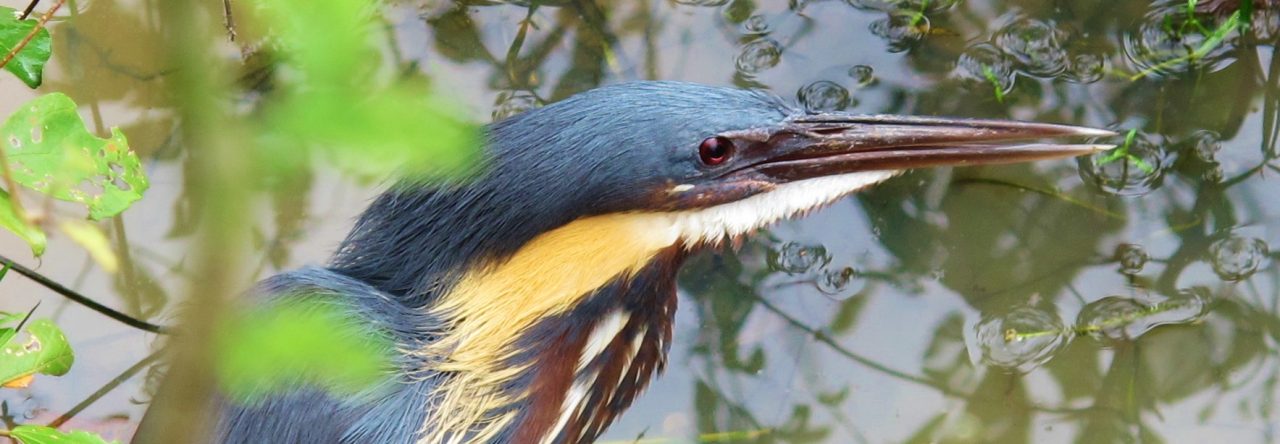
Highlights:
- Taiwan Bush-Warbler 1 seen well plus others heard
- Russet Sparrow 1 male
- Taiwan Wren-Babbler 2
- Vinaceous Rosefinch 6
- Ferruginous Flycatcher 3
- White-backed Woodpecker 2
- Flamecrest 1 seen well plus others heard
Others: White-whiskered Laughingthrush, Steere’s Liocichla, Taiwan Whistling-Thrush, Taiwan Fulvetta, Taiwan Sibia, Taiwan Yuhina, Collared Bush-Robin, Yellowish-bellied Bush-Warbler, Rufous-faced Warbler, Green-backed Tit, Black-throated Tit, Spotted Nutcracker, Large-billed Crow, Striated Prinia, Asian House Martin.
For my last roll of the birding dice this spring, I chose to visit Alishan and Yushan. It was my first visit to the high mountains this year, and easy year ticks like White-whiskered Laughingthrush and Taiwan Fulvetta were waiting for me up there. Also this is an excellent time of year for a crack at the highly elusive Taiwan Bush-Warbler, which is almost impossible to find when not singing. As a final temptation, several online trip reports mentioned that my “most wanted” bird – Russet Sparrow – can be seen in the village of Xiding, halfway up the mountain.
Non-birders – and even some birders – are probably vexed by my fixation with Russet Sparrow. It’s a scarce species in East Asia, one I missed when I lived in Korea and one that I’ve spent quite a lot of time looking for in Taiwan. Here it’s known to be rare and declining, with a population of less than 1,000 birds confined to mid-elevation villages.
I made a very early start from Kaohsiung on Saturday, and by about 8.30am I was in the village of Xiding. At Km 55.1, a loud chirping made me stop the scooter, and there it was: a fine male Russet Sparrow, singing its heart out on a telephone pole right next to Highway 18. It was a beautiful bird, and I spent some time enjoying it. There was no sign of a female, and no sign of any further Russet Sparrows in Xiding or nearby villages – this is a scarce bird indeed, and one I’d just seen in fine style.


I didn’t get to the Tataka visitor center area until about 11.00am, and bird activity was very low, with little of note seen apart from some of the commonest high-altitude birds (White-whiskered Laughingthrush, Collared Bush Robin, Taiwan Fulvetta and Spotted Nutcracker).
I stayed overnight in Chiayi City, and the next day made an early start – although I didn’t make it to the high mountains by first light, as it’s about a two-hour drive from Chiayi to Tataka and I just couldn’t face getting up at 3.30am. I stopped here and there along the way, seeing Striated Prinia in several places, the Russet Sparrow again, and a pair of Taiwan Whistling-Thrushes beside the road at Km 82.

Things started getting interesting at Km 101, where there was a pair of Vinaceous Rosefinches beside the road. I went on to see a total of 6 of these beautiful birds during the morning. Today, I drove past Tataka, where Highway 18 becomes Highway 21, and continued to Km 141.6, where there is a lone and obvious dead tree to the left of the road. Nearly opposite the tree, on the right, a Taiwan Bush-Warbler was singing loudly very close to the road. I waited and waited, just staring at the grass and bushes, until the slightest of movements gave away the bird’s location and I was able to enjoy awesome close views. Birders often have to rely on tapes to lure this excessively skulking bird into the open, but all I needed today was a stroke of luck (thankfully, because I don’t use tapes!).
The dead tree had several easily-viewed Ferruginous Flycatchers, an attractive summer migrant to montane forests in Taiwan which I had only seen once previously.
I returned to Tataka to search unsuccessfully for Golden Parrotbill and Grey-headed Bullfinch, both of which – especially the bullfinch – I’ve seen on numerous occasions here. But not today. Never mind, it gives me a good excuse to return to this lovely area again later in the year.
Today’s birding was to end with a flourish. A few kilometers back down the mountain towards Alishan, there is a small dirt parking lot and a track leading into some tall coniferous trees, on the left hand side of the road as you descend the mountain. I parked and walked along the trail, which at first goes through a rather birdless conifer plantation. After about 10 minutes walking, I had to negotiate a big landslide – passable with care – after which the trail starts following a water pipeline through primary montane forest. The habitat is excellent here and I had the place to myself. This should be an excellent place for a sighting of Mikado Pheasant (although I wasn’t lucky with this species today). I did, however, have really superb views of a Taiwan Wren-Babbler, which showed right out in the open in response to my “pishing” calls, a beautiful bird which the plates in field guides don’t do justice to.

Further along, a pair of White-backed Woodpeckers – a Taiwan tick for me – finally showed well. After a couple of kilometers, the trail seemed to end quite spectacularly in a dark and damp cave. Further investigation revealed that it is possible to walk through the cave and out the other side, where presumably the pipeline trail continues. However, you would need a flashlight which I didn’t have, so I reluctantly turned around and returned to the trailhead.
Continuous heavy rain started soon afterwards, so I was forced to cut short my birding for the day and return to Kaohsiung. I was delighted with my two lifers this weekend, and it’s good to get my year list comfortably through the 200 mark before I return to England for 10 days.
Lifers: Russet Sparrow, Taiwan Bush-Warbler (total 1,775). Taiwan tick: White-backed Woodpecker (total 229). Year ticks: Spotted Nutcracker, White-whiskered Laughingthrush, Taiwan Fulvetta, Flamecrest, Vinaceous Rosefinch, Ferruginous Flycatcher, Taiwan Wren-Babbler (total 203).










